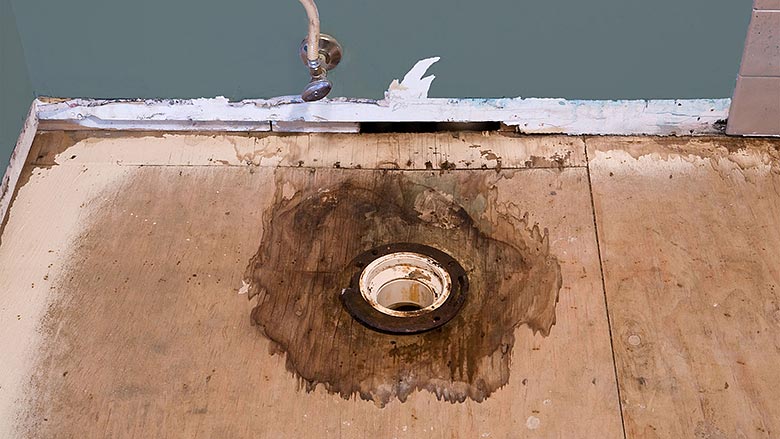Ways to Repair a Water-Damaged Wall in the Bathroom
Ways to Repair a Water-Damaged Wall in the Bathroom
Blog Article
Nearly everybody seems to have their private conception when it comes to Common Causes of Water Damage in a Bathroom.

The bathroom is incredibly susceptible for damp build-up and also possible water damages as a result of the constant use water in it. This write-up offers simple inspection techniques to help spotting water damage risks.
The regular use of water in the restroom makes it incredibly susceptible for damp build-up and potential water damage. By inspecting it routinely, you can lower water relevant problems.
The adhering to collection of assessments is simple to carry out and should be done once in every 3 months in order to maintain your washroom in good shape and to stop prospective water problems triggered by the tub, the shower, pipe joints and also plumbing, sinks, cupboards, and the commode
Do not disregard carrying out these inspections and also be extensive while performing them. Remember that these basic evaluations can conserve you a lot of money by giving early indications for water damages
Sinks and Cabinets
Sinks and also cupboards are exposed to wetness and moisture everyday and also are commonly overlooked. Evaluate frequently under the sink and on the counter top above it. Fix any drip in the catch as it may recommend drain troubles. Take a look around the sink, slow-moving draining pipes might indicate an obstructed drain. Change sink seals if they are cracked or loosened.
Bathtub as well as Shower
The shower and tub call for special focus and upkeep. Check the ceramic tiles and replace if fractured. Ensure that there is no missing out on grout in between the floor tiles. Examine and also replace split caulking at joints where the wall surfaces meet the flooring or the bathtub. Blocked drains pipes and pipes troubles will stop the bath tub from drying as well as might indicate severe troubles beneath the tub. Seek advice from a professional promptly to stop structural damage. Take notice of discolorations or soft areas around the tub wall surfaces as they may indicate an inner leak.
Plumbing
Signs for water damage are difficult to identify since a lot of pipelines are mounted inside the walls.
Pay special interest to floor covering and also walls dampness and stains as they may suggest an undetectable plumbing trouble. Examine moisture levels in adjoining spaces as well.
The Bathroom
The commode is a vulnerable water junction. Inspect the water lines and also search for leaks around the bathroom seat, in the tube, and under the water tank. If you discover any kind of signs of moisture on the floor around the bathroom, look for leakages in the toilet rim and storage tank seals.
Know that hanging commode bowl deodorants enhances the possibilities for obstructions.
TIPS TO PREVENT WATER DAMAGE IN THE BATHROOM
The average household uses approximately 80-100 gallons of water per person per day. For a family of 4, that's almost 2,500 gallons of water a week! The largest portion of this consumption comes from bathroom use. Flushing the toilet uses the most water, followed by taking a shower or bath. With that much water running through the home, water damage in the bathroom is bound to happen. Knowing how to spot signs of a water leak is essential to preventing long-term damage. This guide provides you with tips to reduce the impact of water damage on your bathroom.
CAUSES OF BATHROOM WATER DAMAGE
Pipe breaks are the most common cause of water damage we see in our daily jobs. The age of a pipe plays a large role in a pipe break as well as corrosion. Over time, the metal begins to break down, allowing water to escape. Frozen pipe breaks are also a concern in the winter months. Toilet overflows caused by paper products or children flushing inappropriate items. Degraded caulking around the toilet or bathtub can allow water seepage, sometimes behind the fixture, into the subfloor or walls. Condensation forms when the water in a pipe is cooler than the air temperature. Beads of water form on the exterior of the pipes, sometimes so much so that the water begins to drip and pool below. Sink or shower backups created by poor drainage. HOW TO PREVENT WATER DAMAGE IN YOUR BATHROOM
Inspect your toilet supply line for worn or frayed hoses and replace them as needed. Winterize your plumbing to prevent a frozen pipe break. Use vent fans to prevent condensation that can lead to mold growth. Routinely check and replace degraded caulking around your toilet or bathtub. Increase the temperature in your toilet tank and insulate your pipes during the warm summer months to keep condensation from forming. Use child safety locks on the toilets. Flush only toilet paper. "Flushable" wet wipes are actually not good for your plumbing system. Additionally, feminine hygiene products should not be flushed. Prevent water from escaping the tub or shower. Make sure shower curtains are in good condition. Inspect shower doors and replace the seal strip if necessary. Wipe up any water that accumulates on the floor and use bath mats. Water left to sit can cause damage to the tiles and flooring. Refrain from using bath products containing heavy oils to avoid a clogged drain.

I hope you enjoyed reading our section on Looking for Signs of Water Damage in the Bathroom. Thanks so much for spending some time to read through our posting. For those who liked our blog entry please make sure you remember to share it. We take joy in reading our article about How to Prevent Bathroom Water Damage.
Book Instantly Report this page